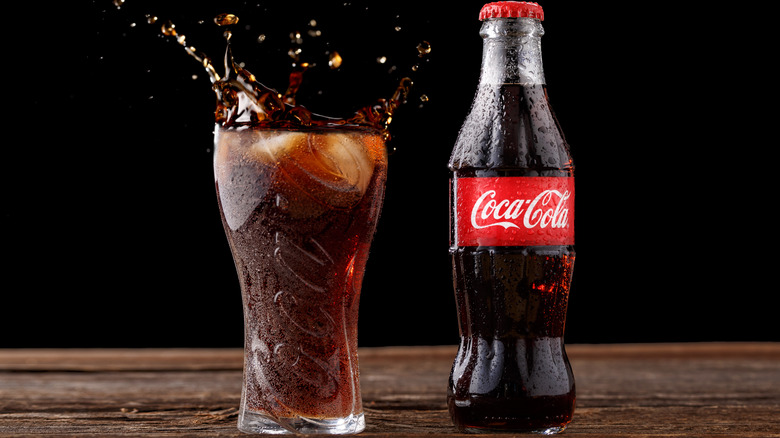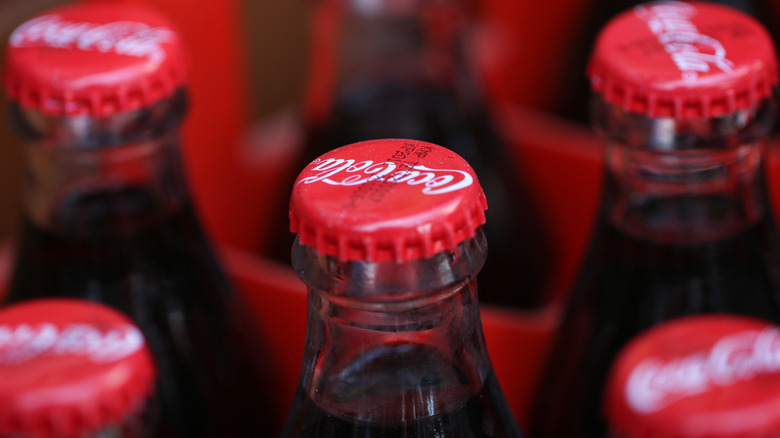The Time Coca-Cola Argued With TIME Magazine Over Its 1950 Cover
The front cover of TIME magazine is arguably one of the most famous and prestigious literary creations, easily identifiable by its bright red border and huge, imposing title. The magazine certainly uses the presence of its cover to full effect, featuring U.S. presidents, tech billionaires, and sports giants, as well as highly emotive topics such as gun violence and public health (per TIME).
However, having such a widely known front cover has presented challenges for TIME over the many decades it has been published (the magazine's website states it was founded in 1923). Business Insider notes that covers evoking controversy have included topics relating to homosexuality, religion, and, of course, politics.
But, somewhat paradoxically, in 1950, TIME altered its cover after external influence seemingly forced its hand. The May 15, 1950 edition of the magazine showcased a drawing of the earth being fed a bottle of Coca-Cola by an animated cartoon of the company's logo (via the magazine). However, TIME never intended the cover to be that way, and it only came about after an intervention from a former Coca-Cola chairman, according to the drinks company. So, why exactly did TIME change its mind?
TIME gave Coca-Cola an advertising boost
Similar to modern day life, in 1950, Coca-Cola was everywhere. Rampant advertising of the product had continued to spread through the previous decade. During World War II more than 5 billion bottles of Coca-Cola were given to American troops across the globe, details The Coca-Cola Company. With the business expanding on such a scale, it's little wonder TIME chose to feature Coca-Cola on its cover.
Originally, TIME planned to have Robert Woodruff as the face of Coca-Cola on its front page, explains Coca-Cola Great Britain. Woodruff had served as Coca-Cola president and chairman, but declined to be featured on the magazine because he believed that the drink was "the only important element in the company," according to the company. The result was a cover that TIME declared its best of 1950.
It was quite a coup for Coca-Cola, too. The Coca-Cola Company reports that it was the first occasion TIME had featured a commercial product on its front page, and Macmillan Learning estimates that the magazine would have had a circulation of somewhere between 200,000 and 3 million copies — a good dose of promotion. TIME's accompanying article was very Coke-friendly, as well, claiming Coca-Cola "creates desire." The magazine praised the drink's taste, advertising, and apparent ability to take on communism.

